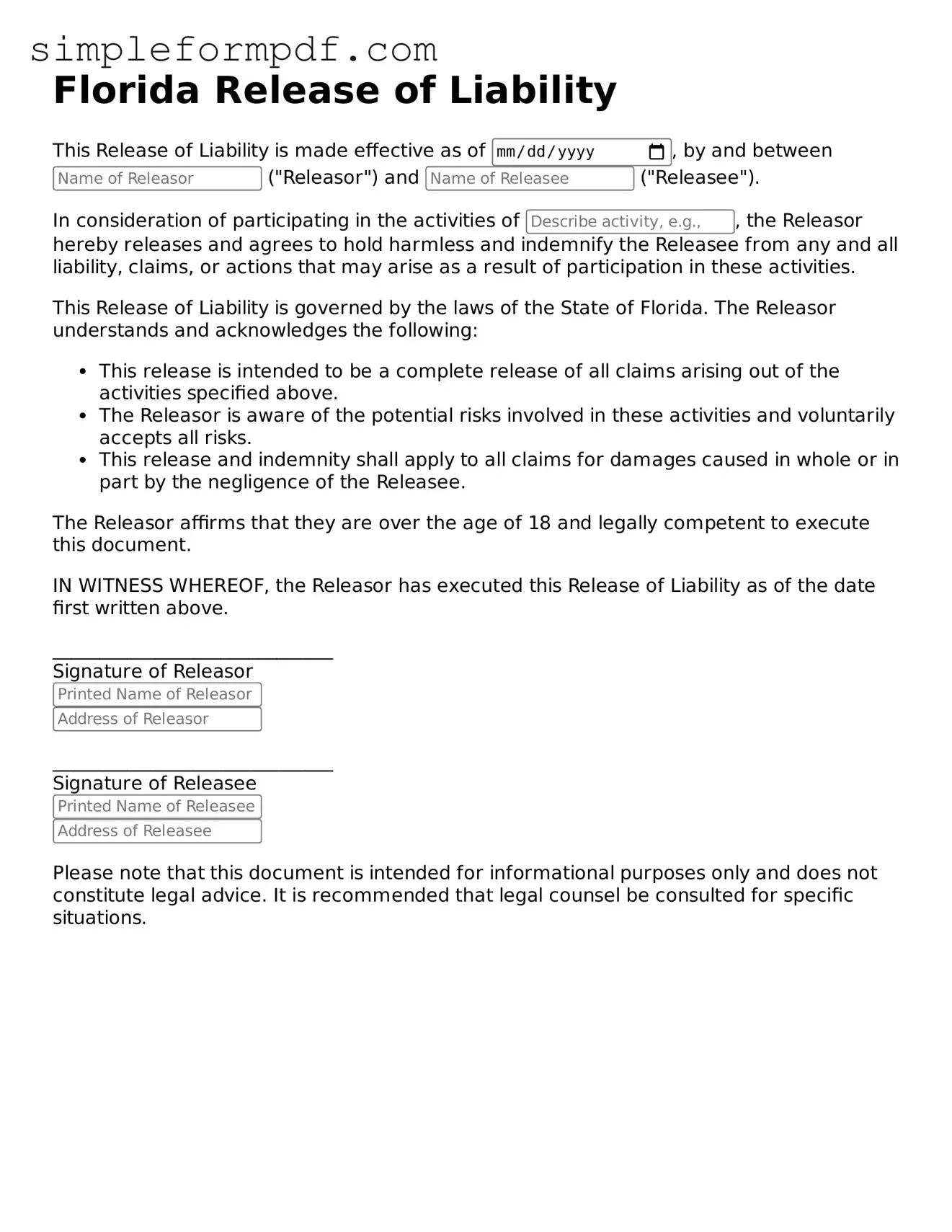Free Release of Liability Form for the State of Florida
The Florida Release of Liability form is a legal document designed to protect individuals and organizations from claims related to injuries or damages that may occur during specific activities. By signing this form, participants acknowledge the risks involved and agree not to hold the provider responsible. For those engaging in recreational or potentially hazardous activities, completing this form is a crucial step in ensuring safety and clarity.
Ready to take the next step? Fill out the form by clicking the button below.
Launch Editor
